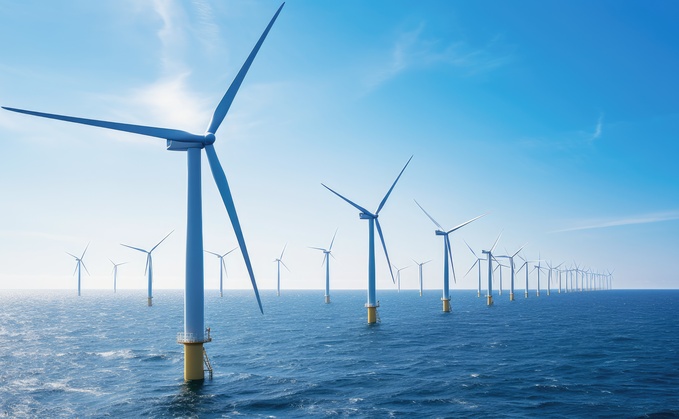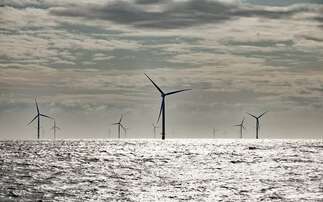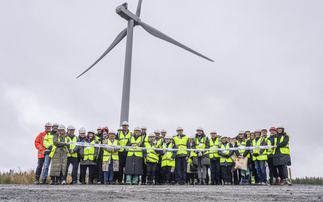Credit: AdobeStock
New report by the Offshore Renewable Energy Catapult's Floating Offshore Wind Centre of Excellence calls for new port infrastructure to support the deployment of floating wind technologies in the UK
The UK needs to accelerate its port infrastructure programme to support a wave of commercial-scale floating offshore wind projects, or risk missing targets to deliver 50GW of offshore wind capacity by 2030 and a net zero power system by 2035.
That is the headline conclusion from a new report released last week by the Offshore Renewable Energy (ORE) Catapult's Floating Offshore Wind Centre of Excellence.
The report stresses the development of floating offshore wind projects is likely to prove critical to achieving the government's climate targets, as well as its goals to enhance energy security and reduce electricity bills. The UK's target of 50GW offshore wind capacity by 2030, includes up to 5GW of floating offshore wind capacity and in the longer term many experts regard floating turbine technologies as key to curbing offshore wind costs and boosting capacity further through to 2050.
However, the report warns progress risks being derailed because of a current lack of port capacity. The government has provided funding to support the development of new offshore wind infrastructure at a number of ports, but the report argues uncertainty surrounding the UK's offshore wind development pipeline - which comprises multiple different projects and developers competing for government support - is hampering efforts to expand port capacity.
Given the increasing scale of offshore wind turbines, and floating turbines in particular, ORE Catapult estimates offshore wind development could be the biggest driver of major port capacity expansion in the UK in the next few years.
The report warns the UK "can no longer rely" on European ports to provide timely services for UK projects, given increasing competition from other offshore wind projects across the continent. It adds that if the UK fails to address the looming shortfall in port capacity it could risk both delaying new projects and losing out on some of the benefits of the green energy transition with ports and businesses in continental Europe positioned to capture the market created by floating offshore wind projects.
The report estimates that by reaching 50GW of offshore wind capacity by 2030 the sector would support 100,000 jobs across the UK by 2030 while at the same time stimulating around £92bn in Gross Value Added (GVA) through supply chain opportunities by 2040.
ORE Catapult says that for floating offshore wind in particular, the UK is in an "enviable position" to lead the world in developing this emerging technology, with a pipeline of around 27GW of floating wind projects already in place.
However, to realise these ambitions the report stresses that "urgent investment" in port infrastructure and domestic supply chains is required to ensure projects can be deployed in line with the governments targets.
The report urges policymakers to identify existing barriers to investment for UK port infrastructure and manufacturing facilities relevant to floating wind in the UK and assess the key factors affecting the international competitiveness of UK ports and offshore wind manufacturing facilities.
The report calls for "urgent policy action" to enable the required port expansion to support offshore wind deployment, which it says will allow energy developers to commit to UK ports and harbours, but warns there is a "real risk" that the UK will miss out on these benefits "unless something changes."
Andrew Stormonth-Darling, programme manager for ORE Catapult's Floating Offshore Wind Centre of Excellence, called the report "an extremely important piece of work in bringing together key stakeholders to examine some of the ways the floating wind and port sectors can come together to find pathways to securing crucial infrastructure for future floating offshore wind aspirations".
"We hope that the pathways we have identified can help policymakers to move forward and create the type of investment environment we need," he said. "Given the timescales involved, and the scale of the undertaking, we know that action is needed fast if we are to feel the full economic benefits of this exciting new technology."
Richard Ballantyne, chief executive at the British Ports Association, welcomed the recommendations in the report. "Floating offshore wind is a once in a generation opportunity and the UK ports industry wants to be pivotal in its delivery," he said. "However, there are a number of market and policy challenges we need to overcome to allow ports to invest in the infrastructure and facilities that will be required.
"This report is an important first step in considering these challenges. It will promote a debate with policy makers over how the sector helps deliver the UK's offshore wind aspirations and how we ensure that energy developers base their activities and jobs in our ports and coastal regions."
Steve Beel, chief executive of Freeport East - the UK's largest container port in Suffolk - suggested Freeport East could have a "significant role" in addressing some of the challenges faced by the nascent floating wind turbine industry.
"Freeport East Harwich offers a unique combination of advantages, including local experience, land availability, planning arrangements, water depth and proximity to the North Sea, making it an ideal location for manufacturing and installation for both floating and bottom-fixed offshore wind projects," he said. "With over 5GW of upcoming projects off the East Anglia coast alone and the southern North Sea being viewed as a clean energy hub for both the UK and Europe, the opportunities for Harwich and the wider area are significant."
In related news, the Wales' Minister for Climate Change confirmed last week that the Welsh Government has committed £1m of investment to explore the potential of floating offshore wind.
The grant will be match funded by the Port of Milford Haven for ground investigation works, which form part of preparatory work to enable future floating offshore wind projects to deploy from Pembroke Port in Wales.
The funding builds on a similar match-funded grant made to Associated British Ports for early-stage work at Port Talbot, which was announced in January 2023.








